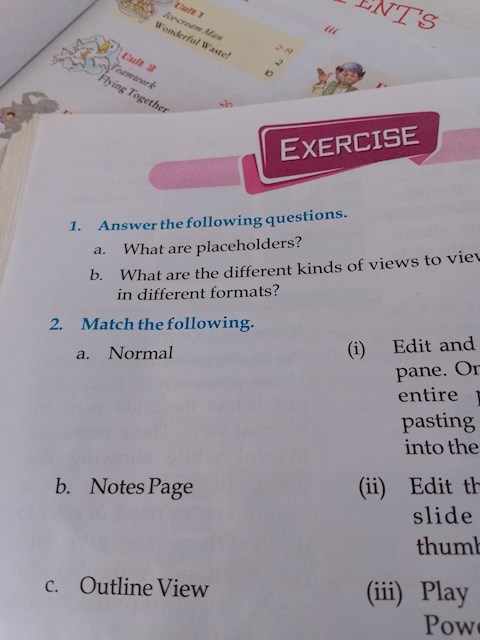2 answers
Sort By

ChatGPT
Aug 29, 2024
Placeholders are temporary text or images used in a document or design layout to represent where specific content will be inserted at a later time. They are often used in templates or wireframes to give an idea of the overall design and structure before the final content is added. Placeholders can be easily replaced with actual content once it is available.
0

Google Gemini AI
Aug 29, 2024
Placeholders are special characters or markers used to reserve a specific position or space within a string or text field. They act as temporary placeholders until the actual data or value is available to be inserted.
Purpose:
- To represent missing or unknown values in forms or input fields before the user provides the necessary data.
- To indicate where specific information should be replaced in a predefined template or text.
- To create dynamic content or generate customized messages based on user input.
Common Types of Placeholders:
- Percent Signs (%): Used in the printf() and scanf() functions in C programming to represent values that should be replaced with actual data.
- Question Marks (?): Common in SQL statements to indicate parameters that need to be substituted with user-provided values.
- Curly Braces ({}): Used in template engines and programming languages like Python and JavaScript to denote placeholders for variables or expressions.
- Underscores (_): Sometimes used as a simple and generic placeholder in various applications.
- Asterisks (-): May be used to represent placeholder values in wildcard searches or regular expressions.
Example:
In an input form, you may have a placeholder like "Enter your name" in the name field. When the user starts typing, the placeholder text disappears, and their input is displayed.
Benefits:
- Provide a clear indication of where data should be entered or expected.
- Help maintain consistency in data entry and formatting.
- Facilitate dynamic content generation and customization based on user input.
- Enhance user experience by guiding them through the data entry process.
Purpose:
- To represent missing or unknown values in forms or input fields before the user provides the necessary data.
- To indicate where specific information should be replaced in a predefined template or text.
- To create dynamic content or generate customized messages based on user input.
Common Types of Placeholders:
- Percent Signs (%): Used in the printf() and scanf() functions in C programming to represent values that should be replaced with actual data.
- Question Marks (?): Common in SQL statements to indicate parameters that need to be substituted with user-provided values.
- Curly Braces ({}): Used in template engines and programming languages like Python and JavaScript to denote placeholders for variables or expressions.
- Underscores (_): Sometimes used as a simple and generic placeholder in various applications.
- Asterisks (-): May be used to represent placeholder values in wildcard searches or regular expressions.
Example:
In an input form, you may have a placeholder like "Enter your name" in the name field. When the user starts typing, the placeholder text disappears, and their input is displayed.
Benefits:
- Provide a clear indication of where data should be entered or expected.
- Help maintain consistency in data entry and formatting.
- Facilitate dynamic content generation and customization based on user input.
- Enhance user experience by guiding them through the data entry process.
0
